Living with a dog can bring immense joy, but for individuals with allergies, the dream of pet ownership can seem out of reach. The constant worry about shedding fur and dander often leads to seeking out “hypoallergenic” options. While no dog is entirely allergen-free, certain breeds are known for producing fewer allergens, making them a better fit for many allergy sufferers. This is particularly true for medium sized dog breeds that don’t shed a lot.
This article will delve into why certain dogs are considered more allergy-friendly, focusing on medium-sized breeds that are celebrated for their low shedding qualities. We’ll explore the characteristics that make these dogs suitable companions and provide insights for potential owners.
Understanding “Hypoallergenic” Dogs
It’s a common misconception that “hypoallergenic” means completely allergen-free. In reality, all dogs produce allergens, primarily found in their dander (dead skin cells), saliva, and urine. Hypoallergenic dogs have been selectively bred to produce less of these proteins or to shed less of the dander-containing hair. This doesn’t eliminate allergens entirely but can significantly reduce the triggers for many people with dog allergies.
Even breeds that don’t shed much can still cause reactions. However, for those seeking to minimize airborne allergens, focusing on breeds with consistently low shedding is a key strategy. This is where medium sized dog breeds that don’t shed a lot truly shine.
Top Medium Sized Dog Breeds That Don’t Shed a Lot
When considering medium-sized canines that are gentle on allergy-prone individuals, several breeds stand out due to their minimal shedding and manageable dander. These dogs often have coats that require regular grooming but produce less loose hair in the home.
Portuguese Water Dog
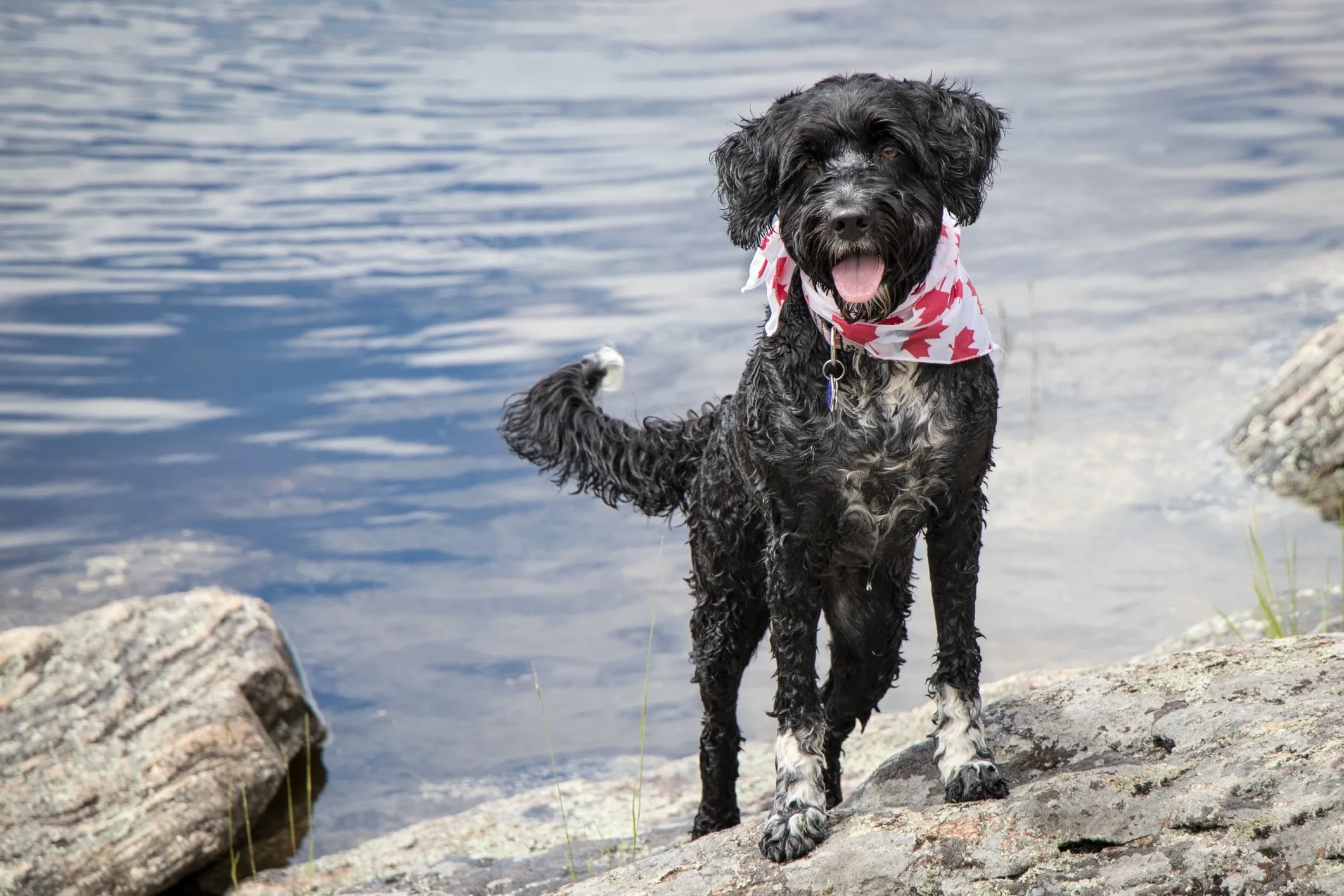 black and white portuguese water dog wearing a red maple leaf bandana in front of water
black and white portuguese water dog wearing a red maple leaf bandana in front of water
Originally bred as a fisherman’s helper in Portugal, the Portuguese Water Dog is a robust, medium-sized breed known for its intelligence and trainability. Their thick, curly coat is a defining feature, and crucially, it sheds very little. This makes them an excellent choice for those concerned about shedding. These energetic dogs thrive on regular exercise, including swimming, which they often adore. Their love for water and playful nature makes them fantastic family companions.
Standard Schnauzer
 gray standard schnauzer standing in a field
gray standard schnauzer standing in a field
The Standard Schnauzer, a larger cousin to the Miniature Schnauzer, offers a similar low-shedding coat in a more substantial package. These dogs are robust, intelligent, and possess a good amount of energy. They excel in activities that provide both physical and mental stimulation, such as long walks, playing fetch, and engaging with puzzle toys. Their steadfast loyalty and alert nature also make them good watchdogs. For those looking for a capable and less shedding medium-sized companion, the Standard Schnauzer is a strong contender. You can learn more about other low-shedding breeds in our guide to medium to large dogs that don’t shed a lot.
Soft Coated Wheaten Terrier
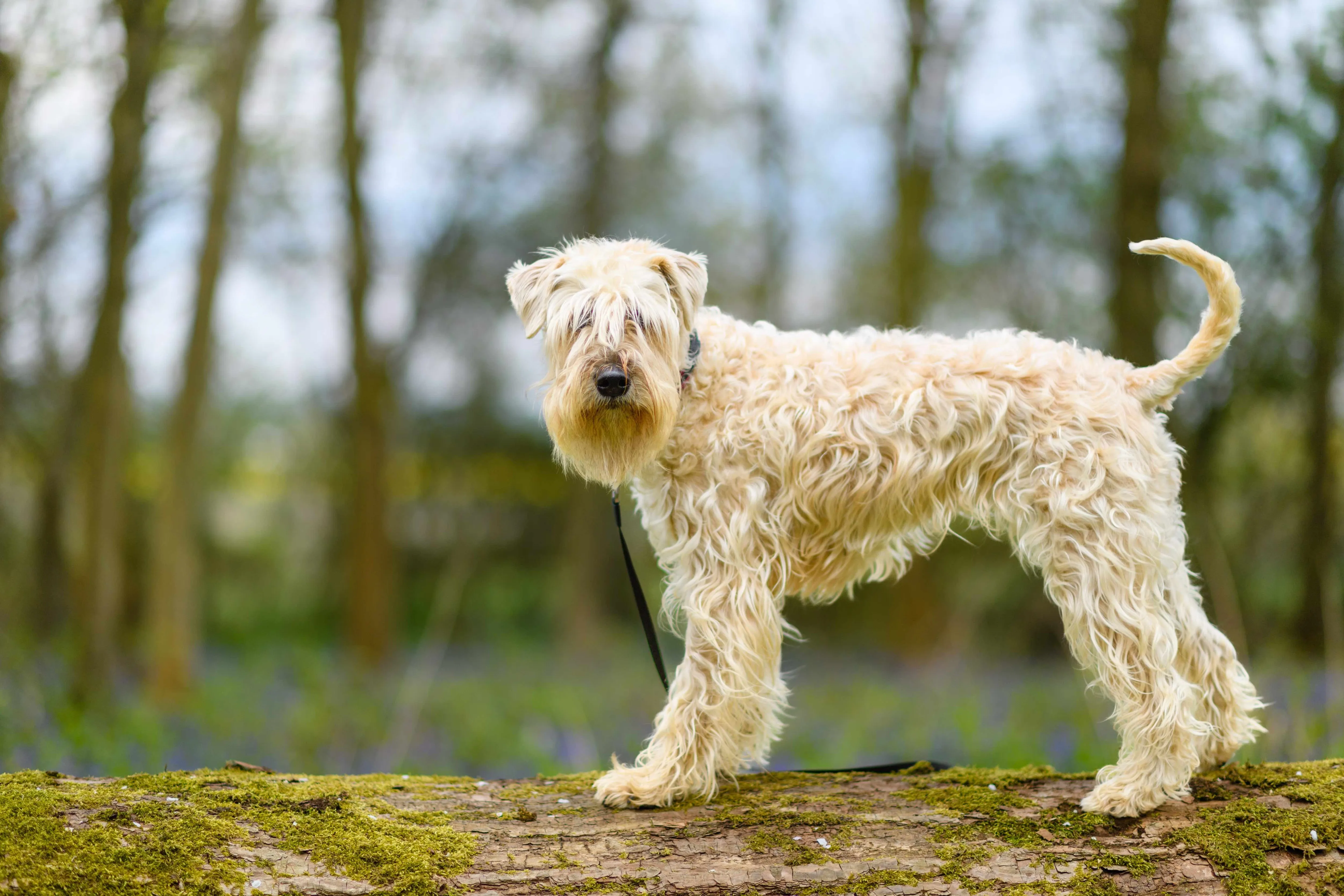 soft coated wheaten terrier dog on a log
soft coated wheaten terrier dog on a log
The Soft Coated Wheaten Terrier, an Irish breed, lives up to its name with a silky, soft coat that doesn’t shed much. These terriers are known for their joyful and energetic disposition, maintaining a high energy level throughout their lives. They require ample exercise and mental stimulation to stay happy and well-behaved. Their friendly and outgoing nature makes them wonderful family pets, provided their exercise needs are met. Their distinctive coat, while low-shedding, does require regular grooming to prevent matting.
Poodle (Standard)
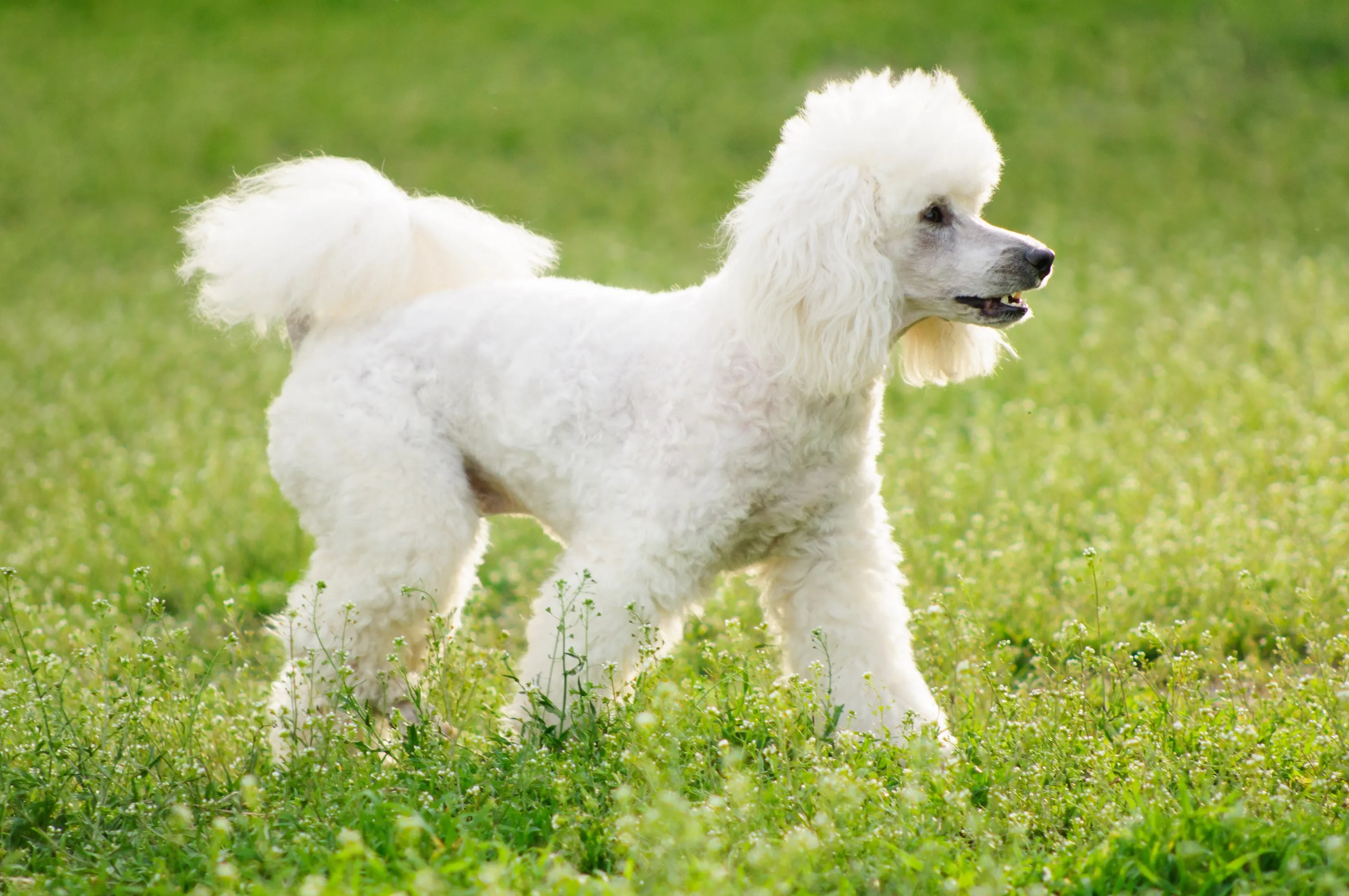 white poodle walking through grass
white poodle walking through grass
While Poodles come in various sizes, the Standard Poodle is a magnificent medium-to-large breed that is highly intelligent and famously low-shedding. Originally bred for water retrieving, they possess a dense, curly coat that traps dander and loose hair, rather than allowing it to disperse into the environment. This breed requires consistent grooming to prevent tangles and mats. Their high intelligence makes them exceptionally trainable, and they excel in various canine sports and activities. For a more in-depth look at Poodle variants, you might find our article on small and medium dogs that don’t shed insightful.
Bernedoodle
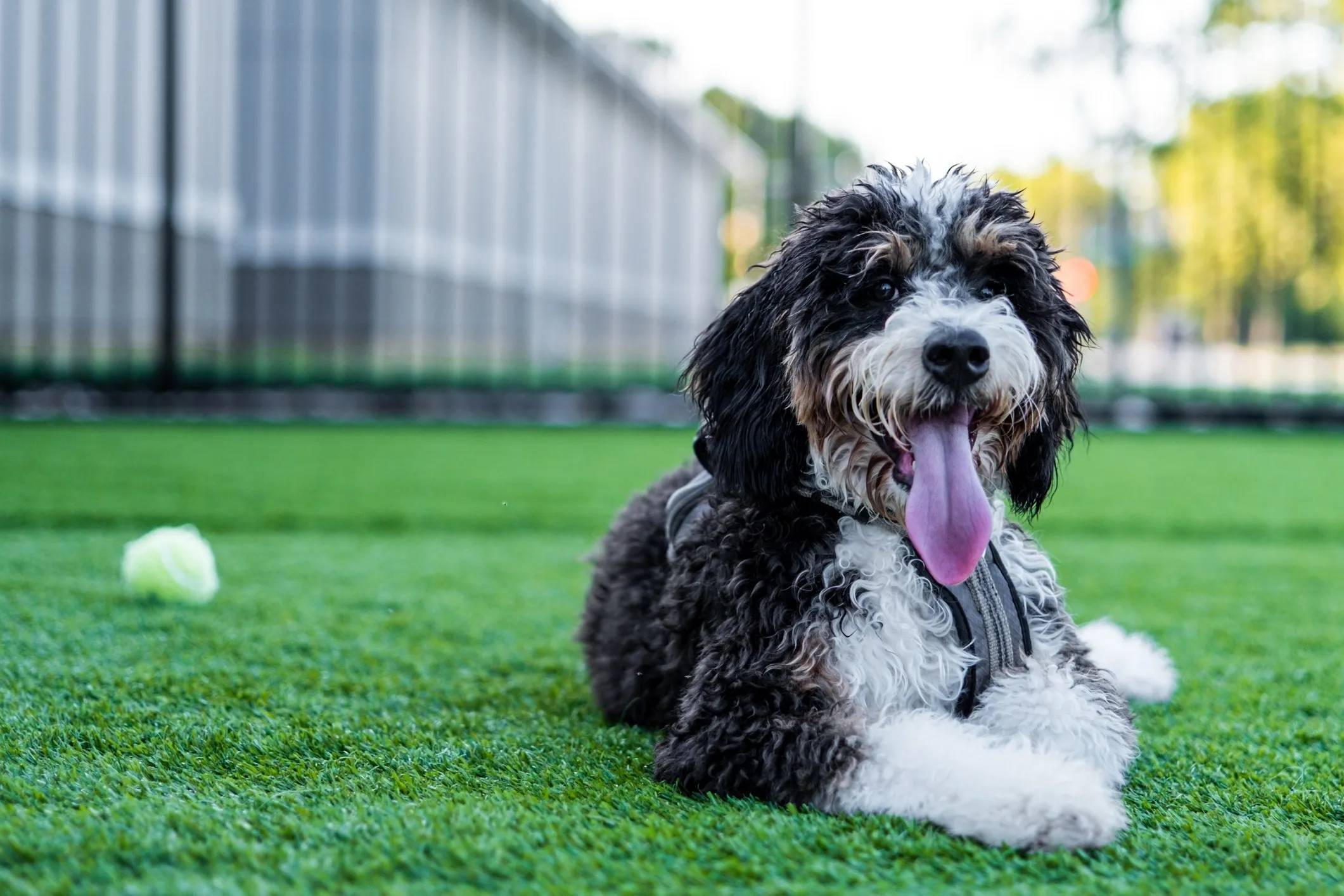 large bernedoodle dog lying in grass with his tongue out
large bernedoodle dog lying in grass with his tongue out
The Bernedoodle, a delightful crossbreed between a Bernese Mountain Dog and a Poodle, is often a fantastic choice for allergy sufferers seeking a medium to large companion. They typically inherit the Poodle’s low-shedding coat, combined with the Bernese Mountain Dog’s friendly and gentle temperament. These dogs are affectionate, good with children, and make wonderful family pets. Their size and energy levels mean they need regular exercise to thrive.
Aussiedoodle
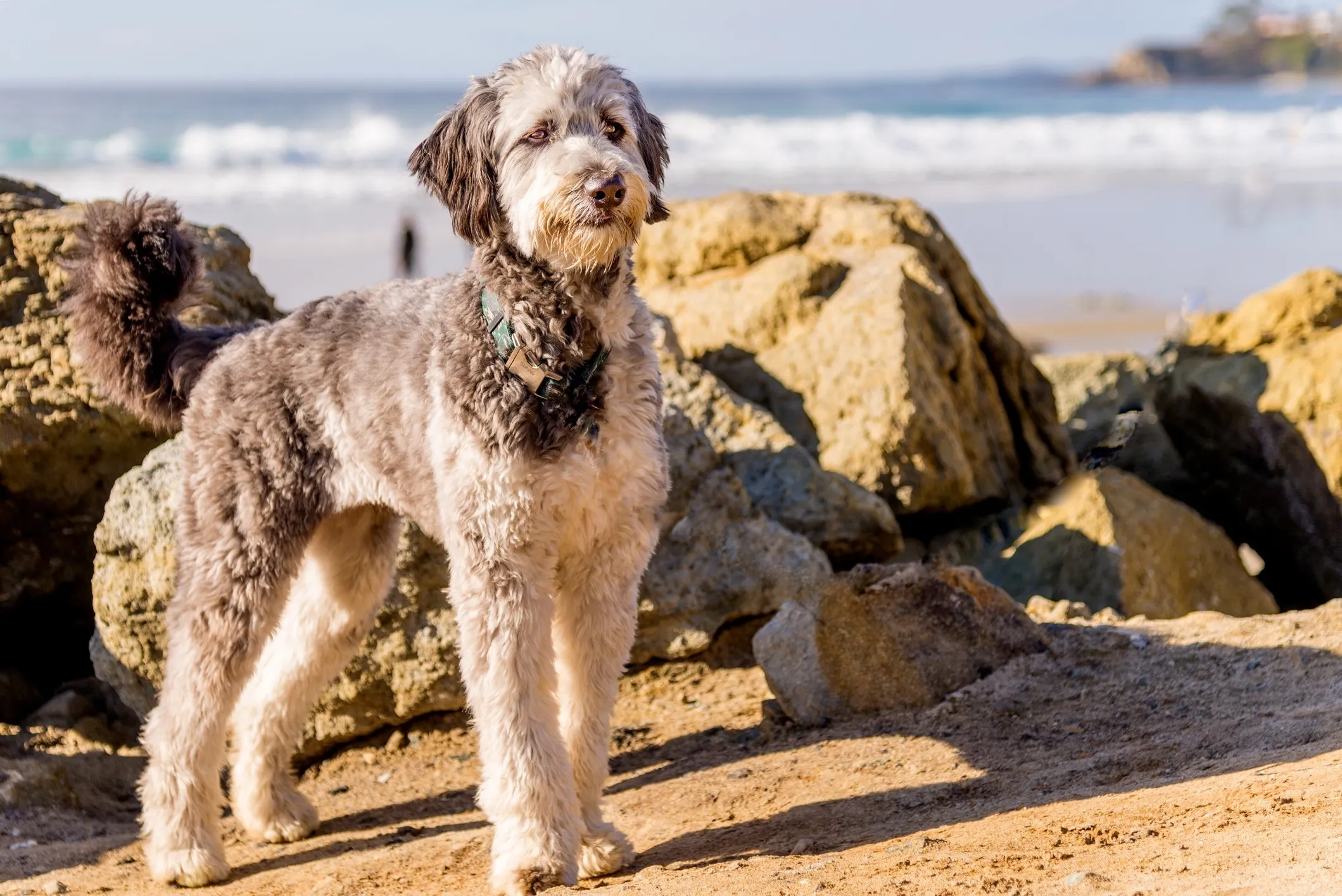 standard aussiedoodle dog standing on a beach
standard aussiedoodle dog standing on a beach
A hybrid of the Australian Shepherd and the Poodle, the Aussiedoodle is a smart, energetic, and very low-shedding dog. This breed combines the intelligence and trainability of both parent breeds. Due to their high energy levels and intelligence, Aussiedoodles require significant exercise and mental stimulation to prevent boredom and destructive behavior. Enrichment toys and consistent training are key to keeping an Aussiedoodle happy and well-adjusted.
Essential Care for Low-Shedding Medium Sized Dogs
Living with any dog, especially one with specific coat needs, requires dedication. For medium sized dog breeds that don’t shed a lot, consistent grooming is paramount.
Consistent Grooming is Key
While these breeds shed less, their coats often require regular brushing, sometimes daily, to prevent matting and tangles. Many will also need professional grooming, including haircuts or hand-stripping, every few weeks to maintain their coat health and minimize dander. Investing in quality grooming tools, such as a good brush and potentially dog hair clippers, will be essential.
Maintaining a Clean Environment
Even with a low-shedding dog, keeping your home clean is vital for managing allergens. Regular vacuuming with a HEPA filter, dusting surfaces, and washing pet bedding frequently will help reduce the amount of dander in your living space. Air purifiers can also be beneficial in filtering out airborne allergens.
Health and Veterinary Care
As with all dogs, regular veterinary check-ups are crucial. Discuss your dog’s specific grooming needs and any allergy concerns with your veterinarian. For breeds with specific health predispositions, like those with flat faces (though less common in medium-sized low-shedders), being aware and proactive is important. Understanding how to manage potential issues like tear stains, which can occur in some breeds, is also part of responsible pet ownership.
Conclusion
Choosing a dog is a significant decision, and for those managing allergies, finding the right breed is essential for a harmonious life together. Medium sized dog breeds that don’t shed a lot offer a wonderful compromise, providing the companionship of a dog without the overwhelming presence of shed fur and dander. By understanding the unique needs of these breeds, particularly regarding grooming and exercise, you can welcome a loving, allergy-friendly canine companion into your home.
If you’re exploring options beyond medium-sized breeds, don’t forget to check out our comprehensive lists of small size dogs that don’t shed and medium sized dogs that don’t shed hair.
References
- Hypoallergenic Dogs: What They Are and Which Ones Are Best
